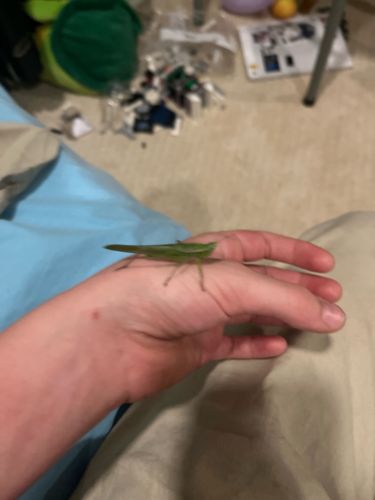Katydid
Scientific Name: Tettigoniidae (a family, not a single species)
Order & Family: Order: Orthoptera; Family: Tettigoniidae
Size: Typically range from 2 to 10 cm (0.8 to 4 inches) in body length, with some tropical species reaching up to 13 cm (5 inches) or more.

Natural Habitat
Katydids are typically found in trees, shrubs, tall grasses, and other dense vegetation. They prefer warm, humid environments, commonly inhabiting forests, meadows, gardens, and agricultural fields.
Diet & Feeding
Mostly herbivorous, feeding on leaves, flowers, and seeds. Some species are omnivorous, supplementing their diet with small insects or decaying animal matter.
Behavior Patterns
Katydids are primarily nocturnal, using their camouflage during the day to avoid predators. Males produce characteristic songs by rubbing their wings together (stridulation) to attract females. Their calls can vary in complexity and rhythm, often indicating species and even individual fitness. Females respond to these calls for mating. They are generally solitary but can be found in groups in areas with abundant food. Some species are migratory.
Risks & Benefits
Generally harmless to humans. They rarely bite, and if they do, it's not painful or venomous. As herbivores, some species can cause damage to agricultural crops or garden plants if their populations are very high. Environmentally, they play a role in the food chain, serving as food for birds, bats, and other predators. Their feeding habits can contribute to plant decomposition and nutrient cycling. Their songs are also an important part of natural soundscapes.
Identified on: 8/25/2025